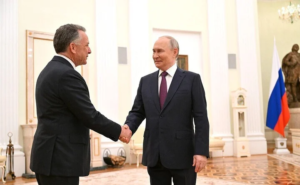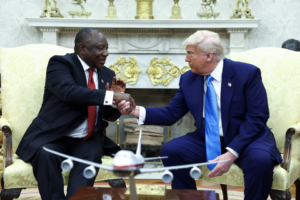The Trump administration has notified Congress of its intent to reallocate $1.8 billion in foreign assistance funds, redirecting the money toward strategic initiatives that align with its “America First” policy framework. According to a congressional notification reviewed by Reuters, the new priorities include investments in Greenland and efforts to counter influence from adversarial governments in Latin America.
The document, dated September 12, justifies the shift by stating that U.S. national security interests require using foreign aid to confront new challenges, thereby making America “safer, stronger, or more prosperous.” This plan, first reported by The Washington Post, would divert money from programs previously authorized by Congress. The State Department has not yet issued a public comment on the proposal.

This move marks a significant departure from the traditional use of humanitarian and economic aid as a tool of “soft power.” Instead, the administration will focus the funds on key policy areas, including diversifying critical mineral supply chains, countering China’s global influence, and addressing the immigration crisis.
Specific allocations detailed in the notification include approximately $400 million for European-related efforts. This portion would fund energy and critical mineral projects in Ukraine, alongside economic development work in Greenland—a resource-rich, strategically located territory that President Trump has previously expressed interest in acquiring.
A further $400 million is earmarked for the Western Hemisphere. These funds are intended to curb illegal immigration to the United States, challenge China’s dominance in sectors like artificial intelligence, and confront the governments of Venezuela, Cuba, and Nicaragua, which the administration describes as “Marxist, anti-American regimes.”
This proposal is the latest step in a broader overhaul of foreign aid that began after President Trump’s second-term inauguration in January. The administration has already dismantled the U.S. Agency for International Development (USAID), consolidating its functions into the State Department. Officials, including Secretary of State Marco Rubio, have stated this shift moves away from a “charity-based model” toward one focused on sustainable growth that serves U.S. strategic interests.
The aid cuts and agency restructuring have drawn criticism from some lawmakers and humanitarian groups, who warn of chaos in global relief operations. Senator Jeanne Shaheen (D-N.H.), a senior member of the Senate Foreign Relations Committee, condemned the latest plan, arguing it “subverted Congress’ power” and called it an “abuse of Americans’ tax dollars.”
Foreign aid has historically constituted about 1% of the total U.S. federal budget.




